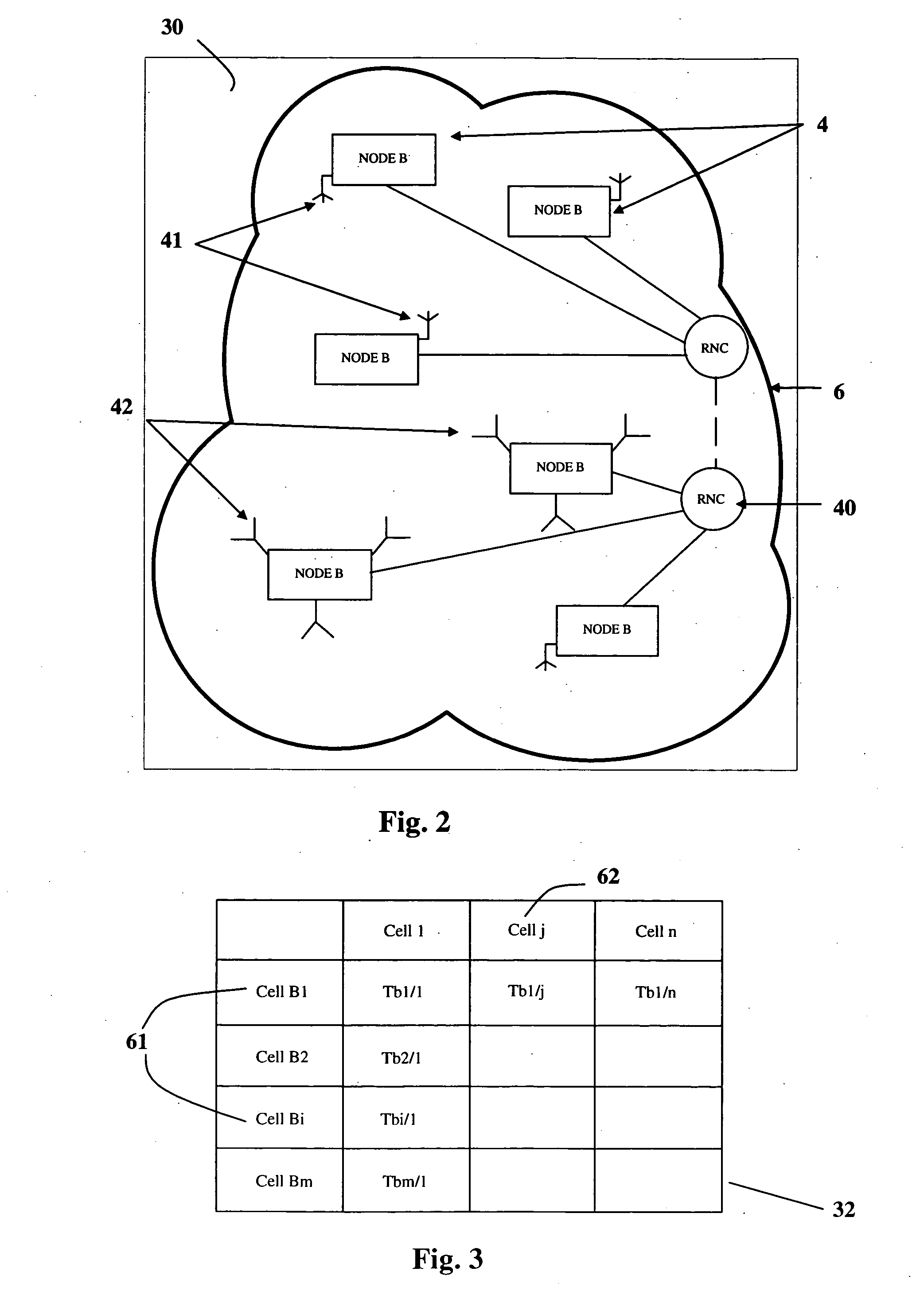Method of calculating and displaying mutual interference in the down direction in a cellular radiotelephone network with a W-CDMA type access
a technology of cellular radiotelephone network and mutual interference, applied in the field of mobile radiotelephony communication system, can solve the problems of increasing interference level, w-cdma system limited by noise, and requiring power control
- Summary
- Abstract
- Description
- Claims
- Application Information
AI Technical Summary
Benefits of technology
Problems solved by technology
Method used
Image
Examples
Embodiment Construction
(s)
[0048] We will now describe the invention in relation to FIGS. 1, 2 and 5.
[0049] Specifically, in the down direction of a UMTS type radio network or a similar type of network operating with the W-CDMA protocol, any reception or transmission device formed by a Node B (4, FIG. 2) transmits a signal through an antenna (41, 42) on a frequency band common to all mobile terminals of users of this network. FIG. 2 shows an example of a portion (30) of the UMTS type radio access network that the user of the computer system (1) according to the invention can select on the computer system display to study mutual interference between cells. As shown in FIG. 2, a Node B (4) may for example be associated with an omni-directional antenna (41) or at least one sectorial antenna (42) transmitting in a single sector. Communications are routed between the Node B (4) and the core of the network using RNC (Radio Network Controller) elements (40). Each antenna (41, 42) in operation covers a territorial...
PUM
 Login to View More
Login to View More Abstract
Description
Claims
Application Information
 Login to View More
Login to View More - R&D
- Intellectual Property
- Life Sciences
- Materials
- Tech Scout
- Unparalleled Data Quality
- Higher Quality Content
- 60% Fewer Hallucinations
Browse by: Latest US Patents, China's latest patents, Technical Efficacy Thesaurus, Application Domain, Technology Topic, Popular Technical Reports.
© 2025 PatSnap. All rights reserved.Legal|Privacy policy|Modern Slavery Act Transparency Statement|Sitemap|About US| Contact US: help@patsnap.com



